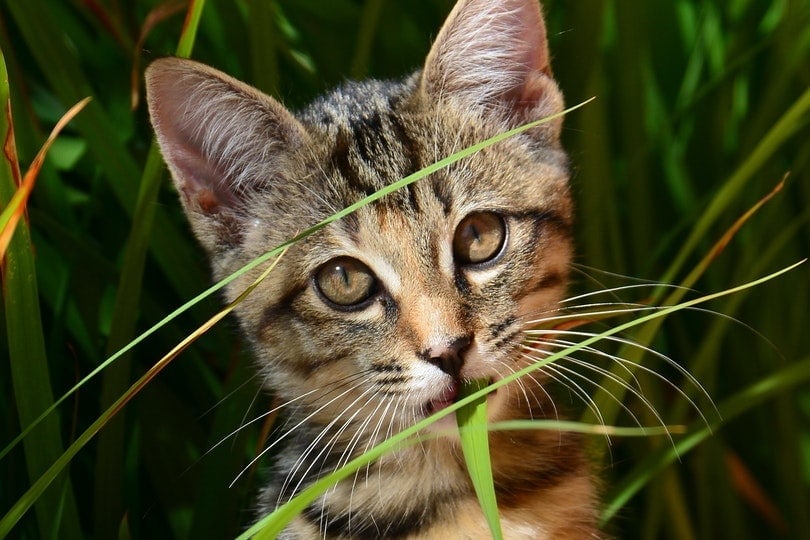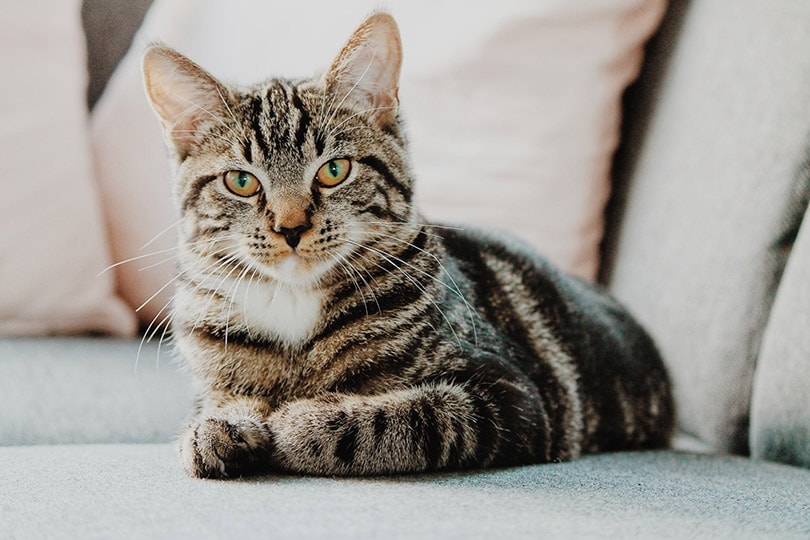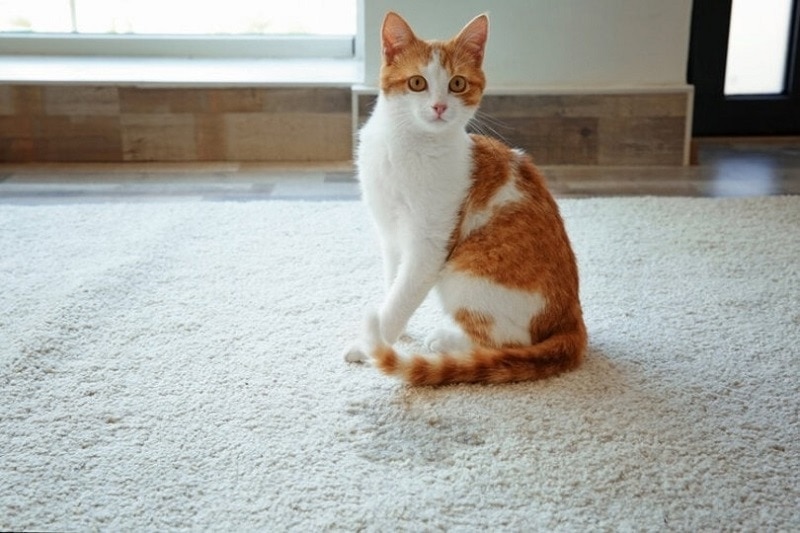
Most cats are fastidiously clean animals. They dislike mess unless it’s a mess of their own making, and even then, it is usually a dry mess that can’t be transferred to their fur or coat. They especially dislike having to use the toilet in a location that isn’t to their liking.
Some cats can be incredibly picky when it comes to their choice and layout of the litter box, and no two cats are necessarily the same. If you have enjoyed a long history of successful littering and, all of a sudden, your cat is peeing just outside the litter box, the cause could be anything from having to share with a litter box bully to disliking your recent change in cat litter pellets.
Below are six possible causes for your cat’s sudden inappropriate litter use, and what you can do to hopefully remedy the situation.
1. The Box Isn’t Big Enough
A cat litter box should be at least one and a half times the length of your cat and three times as wide as the cat. This allows your cat the room to climb in, spin around, dig a hole, and finish their business.
If the litter box is any smaller than this, they could be trying to go in the box but find that their bottom is perched out over the edge. They may believe that they are completing their business inside the walls of the litter pan, only to be failed by their own size.
The obvious solution is to get a bigger and more appropriately sized litter box, but you should also check where the litter box is situated and ensure that nothing is blocking your cat from being able to get in fully. If the box is in a corner of the room, or partially under a unit, this restricts your cat’s movements in the same way as having a tiny litter tray.
2. Your Cat Doesn’t Like the Litter
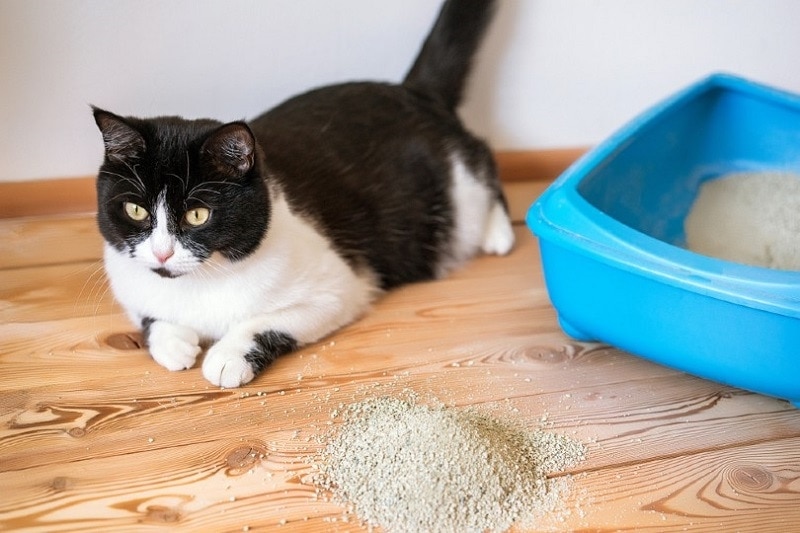
The litter itself could be the problem. This is a more likely cause if you have recently changed the brand or type of litter that you are offering your cat.
Some litters are hard and even quite sharp, which is like sitting on an uncomfortable or painful toilet seat while trying to do your own business.
If you see your cat is perching on the edge of the tray, or that they get in the litter and quickly get back out again, painful litter is the most likely culprit. Revert to your previous type of cat litter, if you recently changed, or try a different type. Be prepared for it to take some time for your cat to get used to a new litter and be patient. You can introduce a new litter type gradually, the same as you would a new food.
It may not be that the new litter is painful. Your cat may dislike the strong odor or even the look of the litter pad that you have started using.
3. Constipation
If your cat is constipated, he may be getting out of the tray before he’s finished doing his business and then being surprised with some more.
Constipation can be caused by illness but it can also be caused by low levels of fiber in the diet, dehydration, or following a change in diet. Look for other symptoms to check for illness, and consider whether you have changed your cat’s diet to one that is lower in fiber or that does not offer enough moisture.
4. An Unclean Litter Box

Cats do not like to go in a dirty litter box, especially if they share with other cats and the dirt belongs to those cats. In these cases, your cat is trying to get as close to the litter box as they can. But they cannot, territorially speaking, go in the actual litter itself.
You should have one litter box per cat, plus at least one extra box. If you have this many, it may be that you need to scoop or clear out the litter boxes more often to ensure that your cat has somewhere clean and convenient in which to go to the toilet.
5. Bullying
Another potential problem that is prevalent in multi-cat households is that of litter box bullies, although it could be a dog or even a small child that is bullying your cat while in the box. They may not even be doing anything physical.
Some cats get nervous and stressed when using a litter box, and having a small child stare at them or another cat push them around while they are preparing themselves, could be enough to prevent your cat from successfully toileting in the box. Try to keep an eye on your cat’s litter box use in order to determine whether anything like this is happening.
6. Medical Problems
Certain medical conditions could be causing your cat to pee just outside the litter box. Common causes include bladder stones, cystitis, kidney disease, and urinary tract infections. Look for other symptoms, monitor your cat’s litter tray usage, and try to see whether there is any blood or crystals in your cat’s urine because these are some of the easiest symptoms to spot.
It can be infuriating if your cat continues to miss the litter tray, but if they are ill, it isn’t their fault, so you should avoid getting mad with them and look for and treat the cause instead.
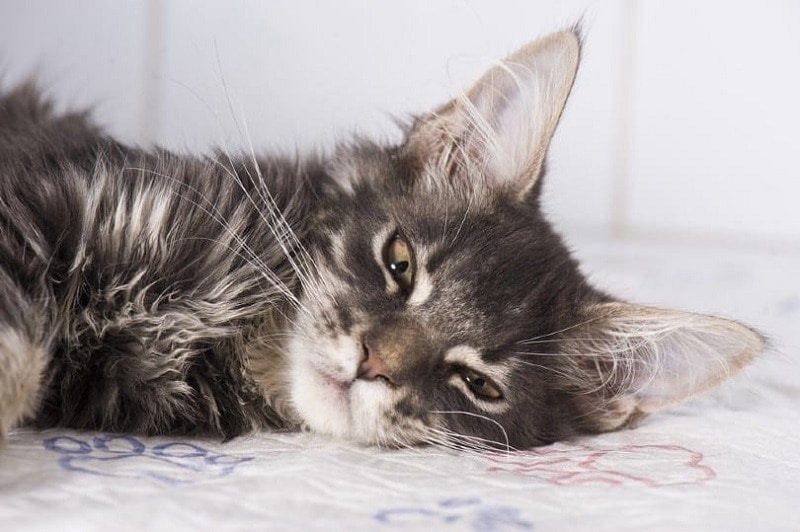
Why Is My Cat Peeing Just Outside the Litter Box?
Once a cat is litter trained, there is usually a good reason if it fails to hit the litter box. If it is peeing directly next to or just outside the litter box, there is certainly some underlying cause. They have gotten close enough to suggest that they are trying to get it in the tray but failing.
Check for symptoms of illness, ensure that the litter tray is big enough and allows for unimpeded access, and check that no litter tray bullies are preventing your cat from being able to use its box.
Related Read: Cats Scratching Litter Box Excessively? 5 Reasons Why & How to Stop It!
Featured Image Credit: Africa Studio, Shutterstock




